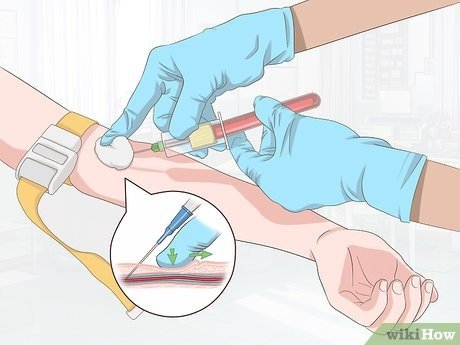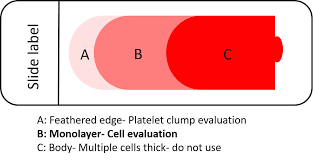After anchoring the vein, which of the following actions should the phlebotomist take next?
Clean the site.
Perform the procedure.
Examine the needle.
Reapply the tourniquet.
The Correct Answer is B
Choice A reason:
Cleaning the site is a step that should be completed before anchoring the vein. The site should be cleaned with an antiseptic to reduce the risk of infection. Once the vein is anchored, cleaning the site again could displace the vein and compromise the anchoring.
Choice B reason:
After anchoring the vein, the phlebotomist should perform the procedure, which involves inserting the needle into the vein at the appropriate angle. Once the needle is in place and blood is seen in the tubing, the phlebotomist can proceed to collect the necessary amount of blood into the vacutainers or syringe.
Choice C reason:
Examining the needle is not the next step after anchoring the vein. The needle should be examined before the procedure begins to ensure it is the correct size and gauge for the venipuncture and that there are no defects.
Choice D reason:
Reapplying the tourniquet is not necessary at this point in the procedure. The tourniquet should already be in place to engorge the vein, making it easier to anchor and access. Reapplying it could cause discomfort or even disrupt the already anchored vein.

Nursing Test Bank
Naxlex Comprehensive Predictor Exams
Related Questions
Correct Answer is D
Explanation
Choice A reason:
Covering a quarter of the slide is not an acceptable criterion for the quality of a peripheral blood smear. The smear should be spread across the slide in a manner that allows for proper examination under a microscope, and covering only a quarter of the slide would not provide enough area for an adequate assessment.
Choice B reason:
Having a well-defined edge is not specifically indicative of the quality of a peripheral blood smear. While the edges should be clean to allow for clear viewing of the cells at the margins, the quality is more accurately determined by the distribution and integrity of the cells on the slide.
Choice C reason:
Covering the entire slide is also not a criterion for a quality peripheral blood smear. In fact, if the blood covers the entire slide, it may be too thick to allow for proper cell differentiation and examination. A proper smear should have a gradient of cell distribution, ending with a feathered edge.
Choice D reason:
A feathered edge is the correct criterion for a quality peripheral blood smear. The feathered edge is the thinnest part of the smear and is where the cells are ideally distributed in a single layer, which is optimal for microscopic examination. This allows for the best visualization of cell morphology and is essential for accurate diagnosis.

Correct Answer is D
Explanation
Choice A reason:
Leaving a patient's record on a countertop while assisting other patients is not an acceptable HIPAA practice. Patient records contain sensitive information and should be kept secure at all times to maintain confidentiality. Leaving them in a place where unauthorized individuals could potentially access them violates HIPAA regulations.
Choice B reason:
Discarding patient contact information in the trash is a violation of HIPAA rules. Any documents containing patient information must be disposed of through secure methods, such as shredding, to ensure that the information cannot be retrieved or used improperly.
Choice C reason:
Sharing passwords with anyone, including coworkers, is against HIPAA guidelines and general security best practices. Each staff member should have a unique login credential to ensure that access can be tracked and that each person is accountable for their actions within the system.
Choice D reason:
Discussing patient information with an assisting coworker is acceptable under HIPAA, provided that the coworker has a legitimate need to know the information for treatment, payment, or healthcare operations purposes. This type of sharing is necessary for collaborative care and is permitted as long as it is done in a manner that protects the patient's privacy.
Whether you are a student looking to ace your exams or a practicing nurse seeking to enhance your expertise , our nursing education contents will empower you with the confidence and competence to make a difference in the lives of patients and become a respected leader in the healthcare field.
Visit Naxlex, invest in your future and unlock endless possibilities with our unparalleled nursing education contents today
Report Wrong Answer on the Current Question
Do you disagree with the answer? If yes, what is your expected answer? Explain.
Kindly be descriptive with the issue you are facing.
